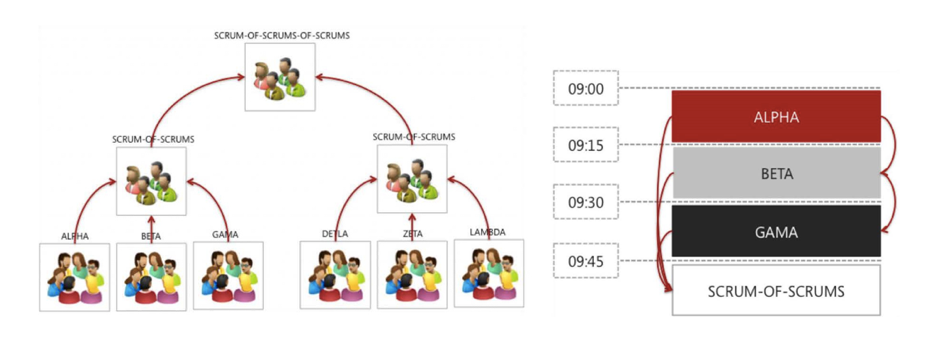Many large companies are in the process of modernizing their current IT and many SMEs are in the process of setting up an IT organizational form. Due to the exponential introduction of technology in the digital change, numerous tools have been rolled out, which are now mostly used in the company without a superordinate purpose. Now the question is: What forms of IT organization are there for companies? There is a distinction between IT organizational forms and IT organizational models. For completeness, I recommend reading the other article as well.
Reading tip: IT organizational forms
Classic IT organizational model
A classic IT organizational model is often equated with ITIL (IT Infrastructure Library). This is constantly being expanded and redefined. The idea of ITIL is the continuous improvement of the service. IT sees itself as a service provider. ITIL basically consists of four processes:
- Incident Management
- Problem management
- Change management
- Release management
Incident Management corrects the disruption of a service and prevents a service from being impaired. This is usually covered by a help desk with first, second and third level support. The aim of problem management is to find the cause of incidents and to remedy them sustainably or to address them proactively before they even occur. Change management makes changes to the existing IT and implements new functions. Release management is responsible for ensuring that these changes are also integrated into the system. Of course there is a lot more to say about ITIL and I will only give a small overview. For more, you should visit an ITIL training course or take a look at YouTube.

Agile IT organizational model
In the agile organization, Scrum is often preferred in IT. However, Scrum was only designed for one team. So this paragraph does not explain Scrum, but the scaling of Scrum. For this I would like to explain a best practice, i.e. Scrum of Scrums. If you want to learn about other models as well, then read my article on Scaling Scrum.
Reading tip: Scaling Scrum
The idea is that you form numerous Scrum Teams in your IT that have a Scrum Master. Each Scrum Master forms another Scrum of Scrums Team with another Scrum Master as the Scrum Master. Depending on the number of teams, this has different levels. The level after Scrum of Scums would then be Scrum of Scrums of Scrums. You can also introduce roles such as a Chief Scrum Master for this purpose.

Of course, there is also the possibility of scaling this via the product owner, such as in the LeSS framework. To do this, you can appoint a Chief Product Owner, who heads a board of product owners who make holistic decisions about the limits of the individual software components. It’s actually up to you, because how you cut the teams’ tasks is decided. You can cut these according to skills (e.g. frontend / backend) or the individual software components (product A and product B).
Reading tip: What is an IT organization
Bimodal IT organizational model
In the end, you could also establish bimodal IT. Agile change is taking place especially in large organizations and this inevitably results in bimodal IT. This means that some areas are highly agile and other areas are less agile to classic.
Gartner has also examined this approach and believes that such bimdodal IT can even bring significant advantages. ITIL-driven IT can be used for stable areas and more agile IT for other, more complex areas. According to Gartner, both areas exist side by side. I have already explained his exact idea in another article.
Reading tip: BiModal IT
Conclusion
No matter how you organize your IT, there are numerous models and these three are certainly not the only ones. Most companies will probably have bimodal IT, as each area of a company is very individual. Thus, there are faster and more complex areas that are more agile and stable areas for, for example, accounting or operations, which is more easily mapped with ITIL. I have never experienced a direct separation as Gartner describes it and such a separation is also heavily criticized. It seems like always: the best of both worlds leads to the greatest success.
Reading tip: IT organization 2020
[yop_poll id=”37″]
[werbung] Verwendete Quellen anzeigen



